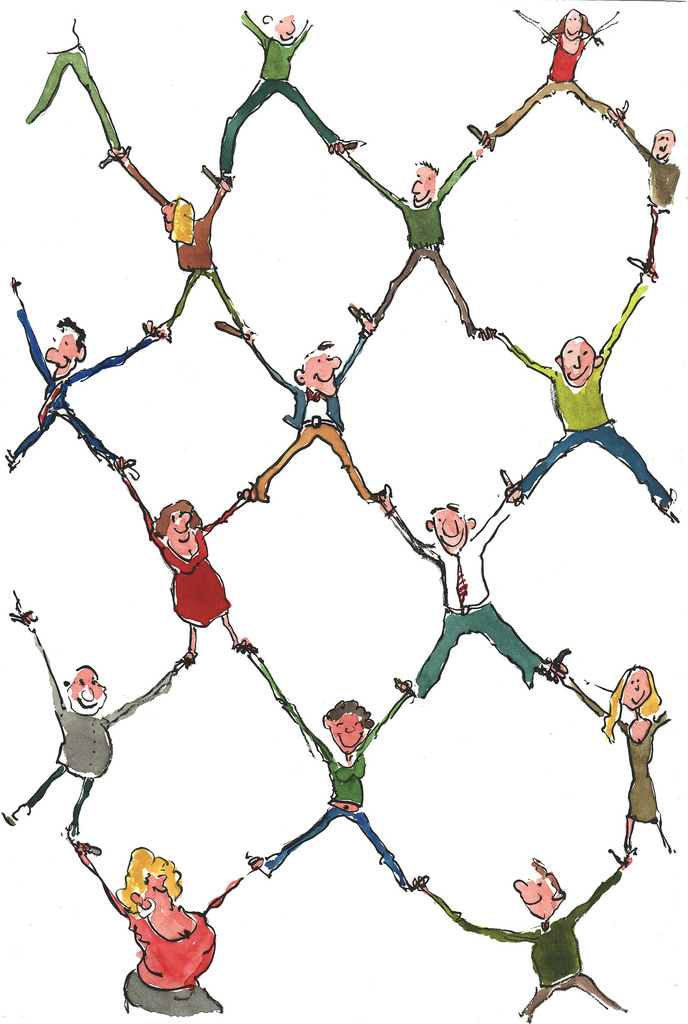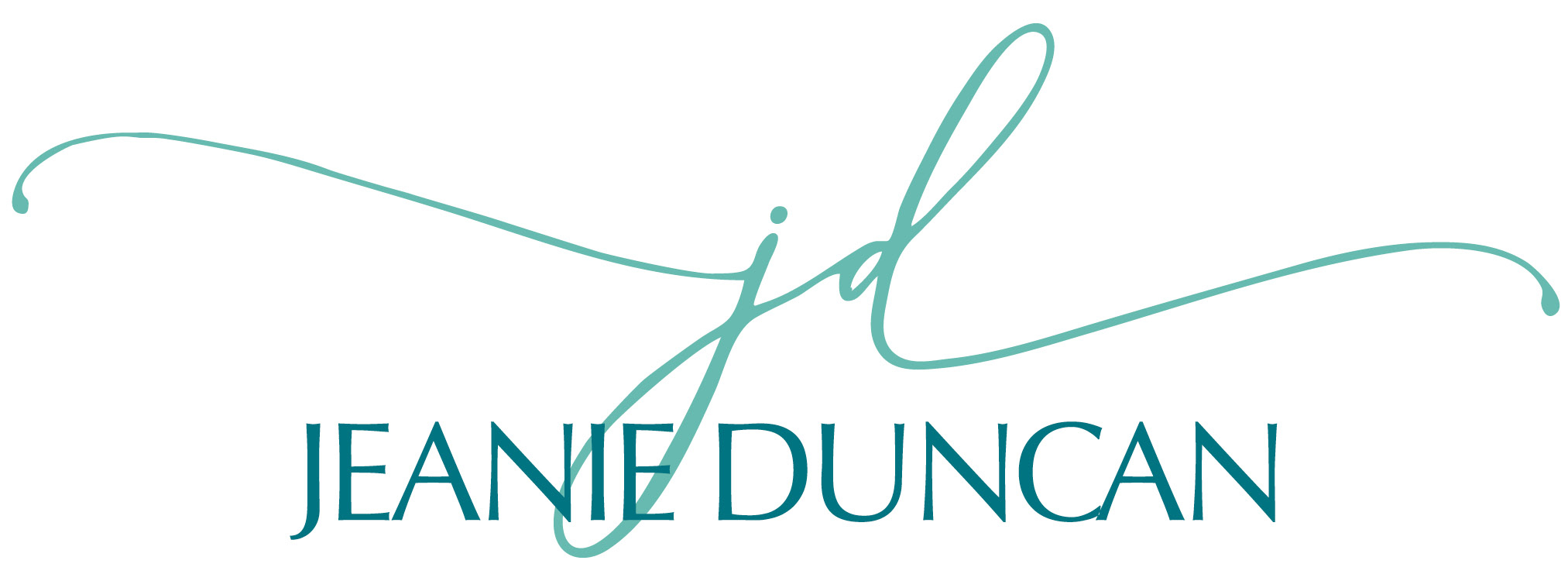
Dec 3, 2014 | Leadership
I love this TedTalk, “Everyday Leadership” by Drew Dudley (http://www.ted.com/talks/drew_dudley_everyday_leadership). It really made me stop and think about the power one person can have on another, often when they don’t even realize it.
Since watching the clip, I’ve thought of several experiences in my own life where someone has had a major impact on me. At first, it was hard to think of examples, but then several came to me. I’m trying to find ways to acknowledge and thank each person. What a powerful experience it’s been!
One in particular stands out for me.
 Several years ago, I took on a new role that required me to make frequent presentations to large groups of people. It made me really anxious. I would go into overdrive researching, preparing, and practicing. I paced, my stomach churned…”don’t let them see me sweat!” I would silently hope. It was agonizing.
Several years ago, I took on a new role that required me to make frequent presentations to large groups of people. It made me really anxious. I would go into overdrive researching, preparing, and practicing. I paced, my stomach churned…”don’t let them see me sweat!” I would silently hope. It was agonizing.
One day as I was about to go on stage, a woman who sat beside me offered some wisdom I’ll never forget. From my memory, it went something like this: “My precious Jeanie, no one in this room knows this material as well as you do. And they have no idea what you’re about to say or not say. Don’t overthink this. When they walk away today, what three things do you want them to remember? That’s all you need to consider. Now let the rest go, and go give them some Jeanie juice.”
I never think of this experience without smiling and a sense of calm and warmth coming over me. Her compassionate message carried three simple points that literally changed me forever.
Today, every time I stand before a group I think of her. I carry with me a memento – a small seashell – as a symbol of this “power of one” moment. As I begin my presentation, I hold it in my hand, and I’m able to begin with confidence and assurance and do what I love best – focus on the people and deliver a message that I hope will deeply impact and move them.
What is your “power of one” moment?

Oct 14, 2014 | Coaching, Intention, Leadership

Some consider visioning to be a fluff exercise rather than an effective personal or business development strategy. After all, in both our personal and business lives, we spend the majority of our time working ‘in it’ rather than ‘on it.’ However, dedicating time to thinking about the future can be a critical investment that reaps big rewards. How do I know? I have proven it for myself and and experienced it with my clients time and time again. In fact, I have found that visioning is 100% smart business practice, helping organizations and individuals who lead them chart the course, set goals, measure progress, and learn from mistakes – all of which directly impact the bottom line.
Five years ago, I gave myself a gift: a 12-month sabbatical. I had recently left a top leadership post as an arts administrator, knowing that I had completed what I set out to do for the organization. But I didn’t quite know what would come next. I needed a little “white space” between completing a very consuming role and beginning my next venture – a little time off to engage in activities that helped me think, discover, and refill my creative well.
One day while reading The Law of Attraction by Esther and Jerry Hicks, I came across a visioning exercise called the “creative workshop.” The concept is to spend about 20 minutes each day giving thought to what you want with great clarity, describing and refining a fulfilling picture of yourself – and the life you want to live. (The idea, of course, is that you attract and create that on which you focus.)
Ultimately, that exercise led me to create a two-year vision of the most full, enriching, and satisfying life I could imagine. I then laid out specific actions I’d take to guide me toward my longer-term vision. After all, what good is a vision without a plan to get there?
What I thought initially was a simple (fluffy) exercise ended up having a profound effect. Who knew?! It was as if I had sprinkled fairy dust or Miracle Gro® on my life. Each day, I’d re-read and think about my vision and action plan. The phone started to ring, emails arrived, and certain people would simply appear in my path – everywhere from the grocery check-out line to the board room. As if I were a magnet, resources steadily came, each of which had a part to play in helping me fulfill my vision.
That was years ago. And recently, I decided to repeat this “workshop” again for myself, and I am having a similar experience – only this time, my vision seems to have expanded. And once again, I can sense the amazing personal growth beginning to happen.
“We should change our perspective from ‘I’ll believe it when I see it’ to ‘I’ll see it when I believe it.'” – Chuck Duncan
As individuals, we give so much thought and energy to our work, our co-workers, and to our family and friends that we often forget to invest in ourselves. I observed a sign on a colleague’s desk recently that read, “Me First.” While at first this might seem amusing or even appear egocentric, all of us have to remember that if we don’t first focus on ourselves, we have less to give others.
The same thing happens with organizations – visioning is often put off or lost altogether, with a team’s time and effort immersed in the day-to-day details and priorities. Yet such future-thinking exercises don’t have to be daunting undertakings; they can be incorporated into regular staff or board meetings or be integrated into a periodic planning process. I’ve used a version of this visioning exercise with clients in strategy development, sustainability planning, leadership transitions, and coaching. What I’ve found is that individuals and businesses who roll up their sleeves and take action to do it get great results and rewards.
Visioning, when accompanied by smart planning and consistent focus, can yield true transformation for you and for the organizations you work to improve. Getting started is easier than you think!
- Set aside some uninterrupted time. I suggest an hour, but a few sessions at 20 minutes each also can be effective.
- Pick a point in the future – it can be weeks, months, or years.
- Imagine a life (or business) that is vibrant and fulfilling beyond your greatest expectations.
- Give yourself permission without boundaries to dream and create.
- Describe what you’re imagining in specific, vivid detail.
- Then create an action plan to help you get there.
It may not come easily at first, but with a little time spent – perhaps over a few days/sessions – clarity and details are likely to take shape.
Once the intention is set, give attention to your new vision and plan – and enjoy what begins to manifest itself.
“You get what you think about, whether you want it or not.”
– Jerry Hicks
photo credit: Ross Manges Photography via photopin cc

Oct 6, 2014 | Coaching

Individuals come to coaching via different pathways and that path can make a big difference whether you meet it with openness or resistance, or a point somewhere in between. One thing for certain, to be successful, coaching cannot be forced.
Your perception of coaching greatly affects your readiness to benefit from having a coach. If it’s just a status symbol, a job perk, or a development tool being prescribed to you, it’s less likely that you’ll be open and commit the time and effort it takes to assess and change your behavior.
If you believe that your organization or boss is punishing you by asking you to get coaching, you may feel that it’s demeaning or a waste of time. But if you see coaching as a powerful tool to cultivate self-awareness, tap into your strengths, and facilitate learning, you’ve taken the first step toward realizing its value and benefit. It’s a good idea to assess your readiness for what will be a serious commitment, and at times an uncomfortable experience, as you stretch and grow through a coaching relationship.
Review the following and consider your response to help you determine your coaching readiness:
- I have or can make available the time for regular coaching sessions and for any action items that a coach might request, such as goal setting, assessments, and development activities.
- I want to make changes for myself, not for someone else.
- Coaching is happening at the right time and place in my life.
- I trust in the coaching process and believe that it will serve my learning and development.
- I am willing to eliminate or modify self-defeating behaviors that limit my success.
- I am open to receiving and reflecting on feedback that supports my growth and development.
- Hiring a professional coach is not a sign of weakness, but a worthwhile developmental strategy and worth the investment.
- I don’t feel resistance to engaging a coach and believe that coaching will make a difference.
In addition to the above points in considering a coaching relationship, there are challenges and complexities that arise in your life and work that can make it especially timely to seek external support and a strategy partner through coaching. You and/or your organization may be:
- Experiencing significant change and transition.
- Stuck, or not growing as you believe you could be.
- Unclear on where you need or want to be in five years.
- Experiencing increased complexity in your role and organization.
- Seeking a confidential, safe space where you can express concerns and challenges.
- Working too hard for the results you’re getting.
- Dealing with a high degree of stress, which is taking toll on your health and relationships.
- Unable to build a great team you trust and that works well together.
- Struggling with ‘managing it all’ and maintaining boundaries.
Understanding why you seek coaching and what you bring to the coaching relationship will make you more effective as a partner in creating an optimal experience. Think about your situation, motivation, learning style, and ability to use resources and relationships for growth. Now may be the ideal time to explore options for your growth and how coaching can be a significant accelerator for it.
 About Jeanie Duncan: Jeanie is President of Raven Consulting Group, a business she founded that focuses on organizational change and leadership development in the nonprofit sector. She is a senior consultant for Raffa, a national firm working with nonprofit clients to lead efforts in sustainability and succession planning, executive transition and search. Additionally, Jeanie serves as adjunct faculty for the Center for Creative Leadership, a top-ranked, global provider of executive leadership education.
About Jeanie Duncan: Jeanie is President of Raven Consulting Group, a business she founded that focuses on organizational change and leadership development in the nonprofit sector. She is a senior consultant for Raffa, a national firm working with nonprofit clients to lead efforts in sustainability and succession planning, executive transition and search. Additionally, Jeanie serves as adjunct faculty for the Center for Creative Leadership, a top-ranked, global provider of executive leadership education.

Sep 29, 2014 | Career, Coaching, Leadership

I believe deeply in the value and impact of coaching. Yet in my work, I’ve discovered that many people have never had a coaching relationship and aren’t quite sure what to expect. I would like to share more about leadership coaching, possibly dispel some myths, and offer perspective about when it might be right for you.
One way I like to think of leadership coaching as similar to how an elite athlete uses a coach. A good coach helps leaders develop clarity of purpose and focus on action. The relationship is a formal engagement in which a qualified coach works with an organizational leader in a series of dynamic, confidential sessions designed to establish and achieve clear goals that result in improved effectiveness for the individual, and often for his or her team and organization.
And to better understand what coaching is, it can be helpful to briefly highlight what coaching is not:
- Counseling or therapy, which is focused on insight into history, psychological healing, pain resolution, and coping mechanisms.
- Consulting, where a consultant offers external expertise to assess, analyze, and offer technical advice or recommendations to solve a particular problem or challenge.
- Training, with the intended outcome to impart knowledge from an expert to a student where the student gains or sharpens specific skills.
Every coaching relationship is unique due to the specific situation of the person seeking coaching and the coach’s approach. However, there are some key elements you can expect with the engagement.
Contracting – This refers to everything that’s involved in setting up the actual coaching relationship and the overall process, from when and how often to meet, whether you’ll meet in-person, by phone or other virtual platforms, to fee structure and billing, and how to handle appointment scheduling and changes.
Boundaries and Confidentiality – This includes such elements as how information is handled (confidentiality and report expectations) and how the coaching relationship fits into the existing network of relationships. Information provided by the client is kept strictly confidential except as otherwise authorized in writing by the client. For example, the coach and client may agree that the goals or results of the coaching work can be reported to his/her boss or other organizational representative. Also, the coach may support the client in preparation of reports he/she makes to a boss or other stakeholder.
Mutual Role Clarity – A primary value your coach brings is helping you decide and act more effectively, not thinking or deciding for you. Your coach will be an ally, supporter, and sounding board. You can expect him/her to be direct and honest, asking powerful questions and making empowering requests that support your desired outcome. As the client, you’ll get the most from your coaching relationship if you show up engaged, willing to examine yourself – your values, beliefs, behaviors, and impact, and are open to make changes necessary to become more effective. Its important to realize that coaching is a comprehensive process that takes time and may address any area of your life, including specific career aspirations, business projects, leadership, or personal topics such as finances, health, and relationships. Even if your coaching engagement is formed in a professional work context, you bring your full self to the experience and therefore “whole life” is taken into account.
I first hired a coach when I was considering applying for a top leadership position in my organization. I wanted to pursue the opportunity and felt I needed a partner with whom to review it from all angles – someone removed from the situation, who would ask me thought-provoking questions, and help me confirm that I was the right person at the right time.
Since that first experience, I’ve hired coaches over the years and now make it a part of my ongoing personal and professional development to retain a coach. The following are some situations where a coach can be particularly helpful:
- You and your organization are experiencing significant change and transition.
- Your organization is not growing as you believe it could.
- You’re unclear on where you need or want to be in five years.
- You’re experiencing increased complexity in your role and organization.
- You seek a confidential, safe space where you can express concerns and challenges.
- You are working too hard for the results you’re getting.
- Stress is taking toll on your health and relationships.
- You’re not spending time on the most productive tasks.
- You haven’t been able to build a great team you trust and that works well together.
- You’re not enjoying your work as much as you once did.
- You struggle with whole life balance.
Using a leadership coach as a developmental partner provides a rich opportunity to learn, reflect, change, and grow. Like any relationship, it’s important to know what to expect and to co-create a constructive alliance. Through your work together, you develop the skills, behaviors, and knowledge enabling you to increase your effectiveness.
 About Jeanie Duncan: Jeanie is President of Raven Consulting Group, a business she founded that focuses on organizational change and leadership development in the nonprofit sector. She is a senior consultant for Raffa, a national firm working with nonprofit clients to lead efforts in sustainability and succession planning, executive transition and search. Additionally, Jeanie serves as adjunct faculty for the Center for Creative Leadership, a top-ranked, global provider of executive leadership education.
About Jeanie Duncan: Jeanie is President of Raven Consulting Group, a business she founded that focuses on organizational change and leadership development in the nonprofit sector. She is a senior consultant for Raffa, a national firm working with nonprofit clients to lead efforts in sustainability and succession planning, executive transition and search. Additionally, Jeanie serves as adjunct faculty for the Center for Creative Leadership, a top-ranked, global provider of executive leadership education.

Sep 23, 2014 | Intention
The American Psychological Association offers ten ways to develop and use a personal strategy for enhancing resilience. The key is to identify ways that are likely to work well for you as part of your own personal approach.
I especially like #1. When I get stuck and feel “up against it,” it helps to think of people resources around me – those who might have ideas or approaches to solving a particular challenge…or may have been through a similar experience and can offer insight. What about you?

- Make connections. Good relationships with close family members, friends or others are important. Accepting help and support from those who care about you and will listen to you strengthens resilience. Some people find that being active in civic groups, faith-based organizations, or other local groups provides social support and can help with reclaiming hope. Assisting others in their time of need also can benefit the helper.
- Avoid seeing crises as insurmountable problems. You can’t change the fact that highly stressful events happen, but you can change how you interpret and respond to these events. Try looking beyond the present to how future circumstances may be a little better. Note any subtle ways in which you might already feel somewhat better as you deal with difficult situations.
- Accept that change is a part of living. Certain goals may no longer be attainable as a result of adverse situations. Accepting circumstances that cannot be changed can help you focus on circumstances that you can alter.
- Move toward your goals. Develop some realistic goals. Do something regularly — even if it seems like a small accomplishment — that enables you to move toward your goals. Instead of focusing on tasks that seem unachievable, ask yourself, “What’s one thing I know I can accomplish today that helps me move in the direction I want to go?”
- Take decisive actions. Act on adverse situations as much as you can. Take decisive actions, rather than detaching completely from problems and stresses and wishing they would just go away.
- Look for opportunities for self-discovery. People often learn something about themselves and may find that they have grown in some respect as a result of their struggle with loss. Many people who have experienced tragedies and hardship have reported better relationships, greater sense of strength even while feeling vulnerable, increased sense of self-worth, a more developed spirituality and heightened appreciation for life.
- Nurture a positive view of yourself. Developing confidence in your ability to solve problems and trusting your instincts helps build resilience.
- Keep things in perspective. Even when facing very painful events, try to consider the stressful situation in a broader context and keep a long-term perspective. Avoid blowing the event out of proportion.
- Maintain a hopeful outlook. An optimistic outlook enables you to expect that good things will happen in your life. Try visualizing what you want, rather than worrying about what you fear.
- Take care of yourself. Pay attention to your own needs and feelings. Engage in activities that you enjoy and find relaxing. Exercise regularly. Taking care of yourself helps to keep your mind and body primed to deal with situations that require resilience.
Read other related blog posts:
Building Your Resiliency Muscle
 About Jeanie Duncan: Jeanie is President of Raven Consulting Group, a business she founded that focuses on organizational change and leadership development in the nonprofit sector. She is a senior consultant for Raffa, a national firm working with nonprofit clients to lead efforts in sustainability and succession planning, executive transition and search. Additionally, Jeanie serves as adjunct faculty for the Center for Creative Leadership, a top-ranked, global provider of executive leadership education.
About Jeanie Duncan: Jeanie is President of Raven Consulting Group, a business she founded that focuses on organizational change and leadership development in the nonprofit sector. She is a senior consultant for Raffa, a national firm working with nonprofit clients to lead efforts in sustainability and succession planning, executive transition and search. Additionally, Jeanie serves as adjunct faculty for the Center for Creative Leadership, a top-ranked, global provider of executive leadership education.
Source: http://www.apa.org/helpcenter/road-resilience.aspx#
photo credit: HikingArtist.com via photopin cc

 Several years ago, I took on a new role that required me to make frequent presentations to large groups of people. It made me really anxious. I would go into overdrive researching, preparing, and practicing. I paced, my stomach churned…”don’t let them see me sweat!” I would silently hope. It was agonizing.
Several years ago, I took on a new role that required me to make frequent presentations to large groups of people. It made me really anxious. I would go into overdrive researching, preparing, and practicing. I paced, my stomach churned…”don’t let them see me sweat!” I would silently hope. It was agonizing.









